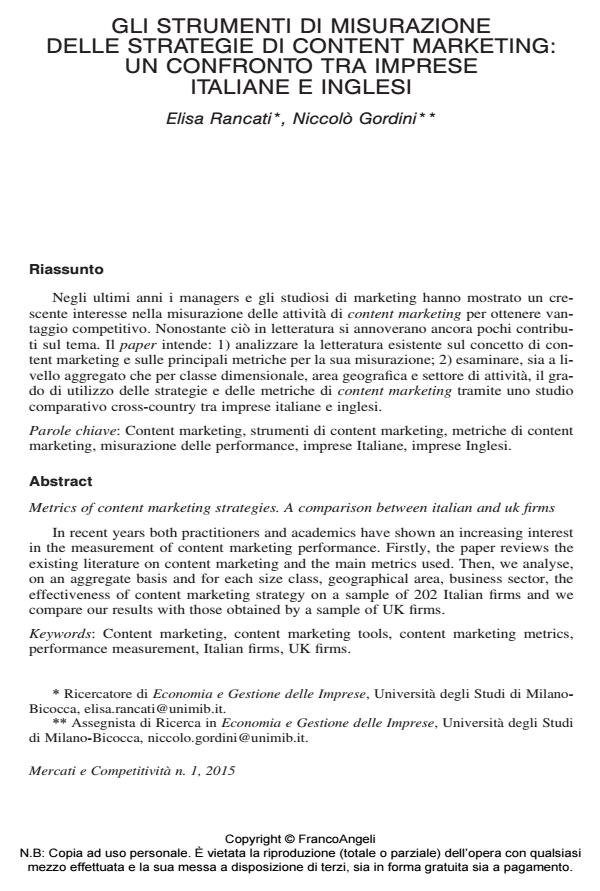Gli strumenti di misurazione delle strategie di content marketing: un confronto tra imprese italiane e inglesi
Journal title MERCATI E COMPETITIVITÀ
Author/s Elisa Rancati, Niccolò Gordini
Publishing Year 2015 Issue 2015/1
Language Italian Pages 30 P. 45-74 File size 173 KB
DOI 10.3280/MC2015-001004
DOI is like a bar code for intellectual property: to have more infomation
click here
Below, you can see the article first page
If you want to buy this article in PDF format, you can do it, following the instructions to buy download credits

FrancoAngeli is member of Publishers International Linking Association, Inc (PILA), a not-for-profit association which run the CrossRef service enabling links to and from online scholarly content.
Metrics of content marketing strategies. A comparison between italian and uk firms In recent years both practitioners and academics have shown an increasing interest in the measurement of content marketing performance. Firstly, the paper reviews the existing literature on content marketing and the main metrics used. Then, we analyse, on an aggregate basis and for each size class, geographical area, business sector, the effectiveness of content marketing strategy on a sample of 202 Italian firms and we compare our results with those obtained by a sample of UK firms.
Keywords: Content marketing, content marketing tools, content marketing metrics, performance measurement, Italian firms, UK firms
- Digital Marketing and Consumer Engagement Elisa Rancati, Niccolo Gordini, Alexandru Capatina, pp.233 (ISBN:9781522551874)
- Global Marketing Strategies for the Promotion of Luxury Goods Elisa Rancati, Niccolo Gordini, Alexandru Capatina, pp.109 (ISBN:9781466699588)
Elisa Rancati, Niccolò Gordini, Gli strumenti di misurazione delle strategie di content marketing: un confronto tra imprese italiane e inglesi in "MERCATI E COMPETITIVITÀ" 1/2015, pp 45-74, DOI: 10.3280/MC2015-001004